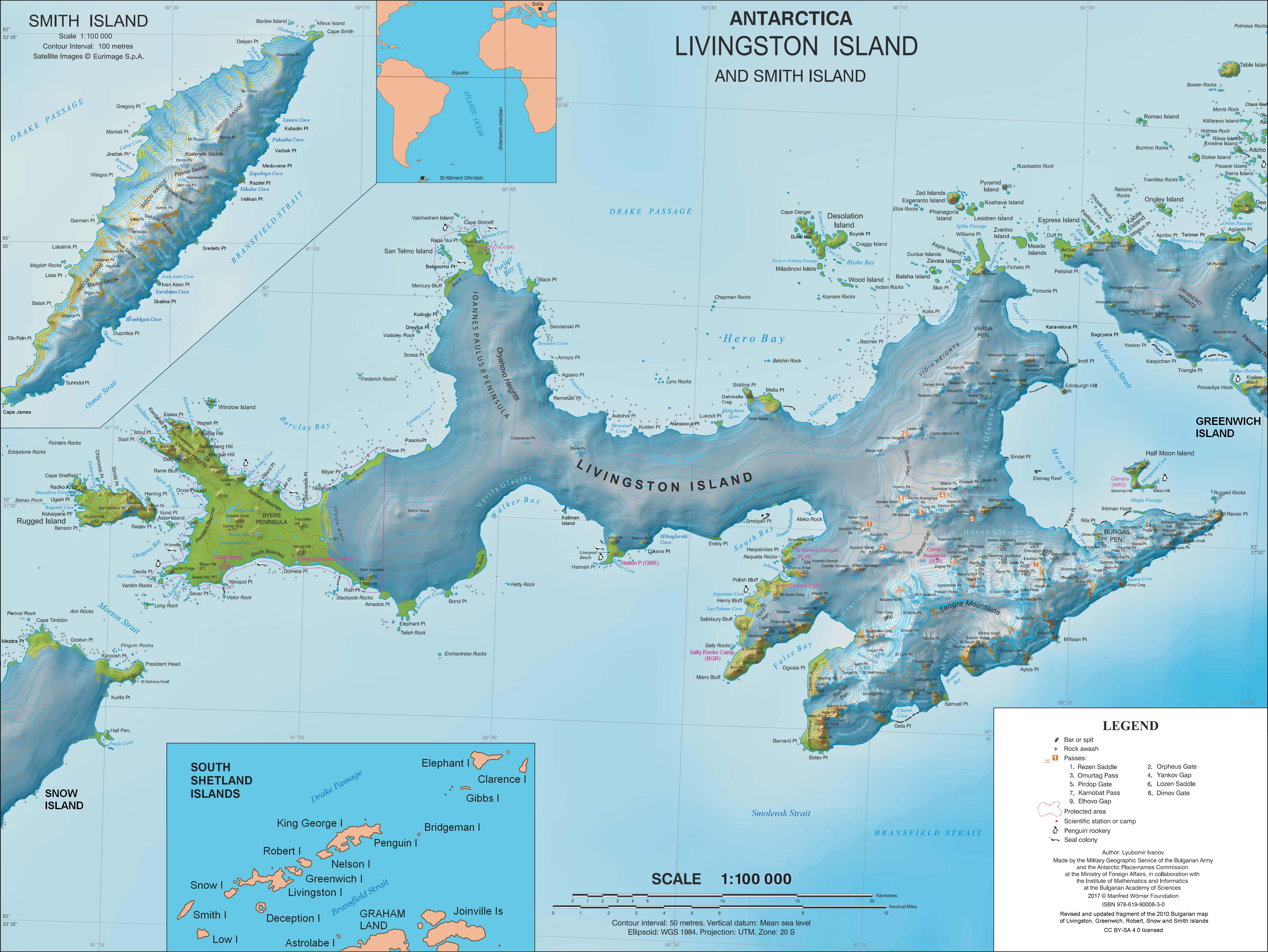Barnard Point on:
[Wikipedia]
[Google]
[Amazon]

 Barnard Point is a
Barnard Point is a
The American Sealers and the Discovery of the Continent of Antarctica: The voyage of the Huron and the Huntress.
Mystic, Connecticut. 86 pp.
Antarctica: Livingston Island and Greenwich, Robert, Snow and Smith Islands
Scale 1:120000 topographic map. Troyan: Manfred Wörner Foundation, 2009.
SCAR Composite Antarctic Gazetteer
* Headlands of Livingston Island Important Bird Areas of Antarctica Seabird colonies Penguin colonies {{LivingstonIsland-geo-stub

 Barnard Point is a
Barnard Point is a headland
A headland, also known as a head, is a coastal landform, a point of land usually high and often with a sheer drop, that extends into a body of water. It is a type of promontory. A headland of considerable size often is called a cape.Whittow, Jo ...
which marks the south-east side of the entrance to False Bay
False Bay (Afrikaans: ''Valsbaai'') is a body of water in the Atlantic Ocean between the mountainous Cape Peninsula and the Hottentots Holland Mountains in the extreme south-west of South Africa. The mouth of the bay faces south and is demarc ...
on the south side of Livingston Island
Livingston Island (Russian name ''Smolensk'', ) is an Antarctic island in the Southern Ocean, part of the South Shetland Islands, South Shetlands Archipelago, a group of List of Antarctic and subantarctic islands, Antarctic islands north of the ...
in the South Shetland Islands
The South Shetland Islands are a group of List of Antarctic and subantarctic islands, Antarctic islands located in the Drake Passage with a total area of . They lie about north of the Antarctic Peninsula, and between southwest of the n ...
, Antarctica
Antarctica () is Earth's southernmost and least-populated continent. Situated almost entirely south of the Antarctic Circle and surrounded by the Southern Ocean (also known as the Antarctic Ocean), it contains the geographic South Pole. ...
. It is situated on Rozhen Peninsula, north-north-west of Botev Point and south-east of Miers Bluff (British mapping in 1968, and Bulgarian in 2005 and 2009).
History
The point was known tosealers Sealer may refer either to a person or ship engaged in seal hunting, or to a sealant; associated terms include:
Seal hunting
* Sealer Hill, South Shetland Islands, Antarctica
* Sealers' Oven, bread oven of mud and stone built by sealers around 1800 ...
as early as 1822. The name was applied about a century later, probably after Mount Barnard (now Mount Friesland
Mount Friesland is a mountain rising to in the homonymous Friesland Ridge, one of the two summits of Tangra Mountains and Livingston Island in the South Shetland Islands, Antarctica along with neighbouring St. Boris Peak. Its north rib is connec ...
) which surmounts it to the north-east. Charles H. Barnard, captain of the ship ''Charity'' of New York, was a sealer in the South Shetlands in 1820–21.Stackpole, E. 1955The American Sealers and the Discovery of the Continent of Antarctica: The voyage of the Huron and the Huntress.
Mystic, Connecticut. 86 pp.
Important Bird Area
The site has been identified as anImportant Bird Area
An Important Bird and Biodiversity Area (IBA) is an area identified using an internationally agreed set of criteria as being globally important for the conservation of bird populations.
IBA was developed and sites are identified by BirdLife Int ...
(IBA) by BirdLife International
BirdLife International is a global partnership of non-governmental organizations that strives to conserve birds and their habitats. BirdLife International's priorities include preventing extinction of bird species, identifying and safeguarding i ...
because it supports a large breeding colony of chinstrap penguin
The chinstrap penguin (''Pygoscelis antarcticus'') is a species of penguin that inhabits a variety of islands and shores in the Southern Pacific and the Antarctic Oceans. Its name stems from the narrow black band under its head, which makes it a ...
s (13,000 pairs), as well as about 30 pairs of southern giant petrels. The 175 ha IBA comprises the ice-free area at the point, which rises to a height of over 250 m at its easternmost extent.
Maps
* L.L. Ivanov et al. Antarctica: Livingston Island and Greenwich Island, South Shetland Islands. Scale 1:100000 topographic map. Sofia: Antarctic Place-names Commission of Bulgaria, 2005. * L.L. IvanovAntarctica: Livingston Island and Greenwich, Robert, Snow and Smith Islands
Scale 1:120000 topographic map. Troyan: Manfred Wörner Foundation, 2009.
Notes
References
SCAR Composite Antarctic Gazetteer
* Headlands of Livingston Island Important Bird Areas of Antarctica Seabird colonies Penguin colonies {{LivingstonIsland-geo-stub